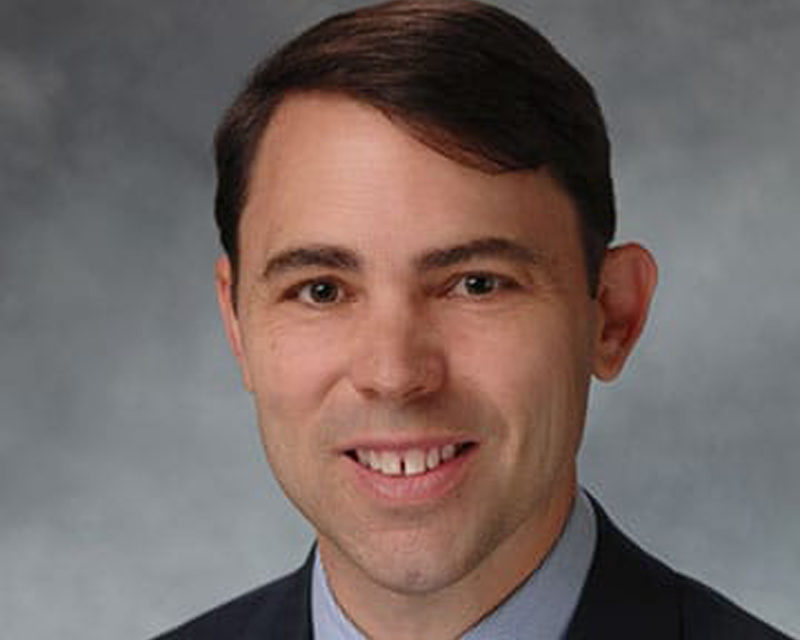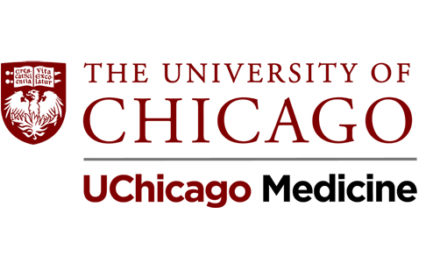
Gateway Foundation’s Thomas Britton talks delivering substance use treatment during COVID-19

The COVID-19 crisis has only exasperated the need for substance use treatment, said Thomas Britton, CEO of Chicago-based addiction treatment provider Gateway Foundation. But with more Illinoisans staying at home comes the added challenge of shifting care that’s traditionally been delivered in person to virtual.
Health News Illinois talked with Britton this week to learn more.
Edited excerpts are below.
HNI: How has the COVID-19 pandemic affected substance use disorder treatment?
TB: So I think that the first thing to really be mindful of is that the industry historically has been dependent and driven through a face-to-face model of care, whether you have a significant issue or more of a minor issue. And overnight, really unless you require acute care, everything is virtualized. So we’re living in a very different world than they were nine months ago.
HNI: How are things now as compared to earlier in the pandemic?
TB: So it’s interesting, I’m very fortunate to have a leadership team that includes some really competent people. And my doctoral background in public health helped us navigate the early days. But in the first six to eight weeks of the pandemic, we did not have access to personal protective equipment. There was no guideline that was laid out by the state that governed our residential programs. And we did not yet have in the first couple of weeks the virtual tool to do counseling. And so we were somewhat left on our own like a lot of people to figure it out. And we were able to put in place within about 10 days a platform that we’re able to do all of our kinds of lower acuity treatments. So we have virtual group counseling, for example, doctor’s appointments, individual counseling appointments and assessment work. And then our residential environments, we were able to put in place protocols that allow us to really maintain operations in a safe way. I made the choice to freeze admissions completely for about two weeks because we did not have access to early testing or safety equipment. And I said, ‘I can’t run this environment with that restriction.’
HNI: How are things now?
TB: If you had asked me that three weeks ago, I would have said that we really kind of settled into a status quo. We have it built internally as a kind of a gauntlet model for our residential programs where, when you walk in the door, we test you or keep you in an admission unit that has a very high level of precautions. If you’re negative, we move you into the general population. If you’re positive, we move you to a COVID-positive unit where we treat people. As the case rates have really amplified over the last couple of weeks. We are seeing more positive clients than we had seen. We went about four weeks without finding a patient that tested positive for COVID. And we admit in a month about a thousand people or so, typically. It is a big sample of people. And now we’re seeing them every single week. So it is going to change the script significantly. We had moved to a hybrid model of outpatient care, where some were virtual only, some were face-to-face only. And I think we’re going to have to move back to a virtual model only as the case rate has increased.
HNI: What have been some of the major challenges in delivering care?
TB: I think that there’s kind of two sides to it. One has been financial, our organization and most medical models are really a fee-for-service environment. So if people do not come, you don’t get paid. And our revenue was interrupted by as much as 40 percent. So there’s a significant challenge. And Gateway Foundation is big enough that we didn’t qualify for the federal (Paycheck Protection Program) money. We were fortunate to get some direct support from the state and that allowed us really the opportunity to continue functioning. But that’s been a real crisis and I see that as a crisis that is going to intensify over the next two or three months.
I think that the other major challenge, there’s one type of challenge in the residential world and one in the outpatient world. So I’ll say outpatient first. There are people that we treat that are either not savvy with technology and are not comfortable making the transition to virtual services, or they really struggled to engage in that environment. So if I’m sitting in a room with you, it’s pretty hard not to engage, or we notice if you’re not engaging. When it’s a group counseling session using video, it’s a very different dynamic. So we’ve had to do a lot of training and development on our clinical teams to help enhance their ability to engage people. And we’ve also had to do orientation and training and support to those that we serve, to help them understand and be confident in the model. And kind of our imperative to return to face-to-face treatment is there are people that didn’t have the data plans or the phone plans, or the ability to connect using technology even if they wanted to. So I think those are the biggest challenges in the outpatient world. In the residential world, by nature, residential treatment facilities maximize space. So we have, one of our programs for example has five units. The smallest unit is 16 beds, and we have some that are bigger. And you just can’t safely have 16 people in those units, it’s too close. So we have purposely restricted the number of people that we support, and we are keeping it at about 70 to 80 percent in most of our environments. And that creates an access issue for those that want to solicit care because there’s not enough treatment that’s out there right now frankly for them to get served.
HNI: How do you make sure those patients are getting care?
TB: One of the things that we did was that we really increased our virtual services. So for people that couldn’t get access, we are doing virtual assessments. For example, there are patients now that we did their assessment virtually, they did all of their treatment virtually and they graduated virtually. We never even met face-to-face, which is such a weird concept when I think about it. And so part of it was expanding that virtual access, so that those who could not get into residential treatment could get an alternative treatment that historically they could not have received. The other is that we reorganized the physical parts of a lot of our rooms on our site so that we could accommodate more people. And then I think that the last one really was integrating testing of all staff and all clients going into residential sites so that we really had a confidence level that those people that were there were COVID negatives. But we nonetheless maintained protocols where everyone is masked unless they’re sleeping.
HNI: Have you encountered any barriers in expanding telehealth services? How have you worked to overcome those?
TB: So we made the choice early on to use GoToMeeting rather than Zoom. It had a lot more securities in place. We’ve been very fortunate we’ve not had any of the incidents that some people describe with Zoom. At the same time, it was not as user-friendly as Zoom is, and Zoom is now integrating a lot of the securities in place that GoToMeeting and WebEx have had. And so we have a best practice virtual team in place right now that is analyzing the quality of our technical platform, and the quality of care and outcomes. And so something that was really important as we go forward, and this is true for the payers and the consumers, is virtual treatment at this time, in this model and in this environment, I don’t think it’s the same outcomes as face-to-face treatment. Because it’s new, we haven’t figured out how to optimize it yet, and there’s almost nobody familiar enough to know if it actually works. And so we wanted to be ahead of the curve on that and we’re currently doing research to determine if it’s working. So one symptom that we saw, for example, is when we have a three-hour group, we’d have people that were coming in for the first half and then never coming back from break. And we were trying to figure out what the deal was, and so we’ve developed a tracking system in order to identify if that occurs. We reach out to them one on one, to talk to them about what are their challenges in engaging, how can we engage them at a better level, then we can re-engage them, and we have had really good outcomes so far.
HN: How has the state’s emergency orders related to telehealth affected these services? I understand that some providers weren’t getting paid for these services before.
TB: Prior to the initial order, it was up to the payer whether or not they wanted to contract with a provider to do telehealth services or not. With the emergency order, they said in essence that every single payer needs to not only authorize and provide virtual services but that they have to pay them at the same rate as when they receive face-to-face. And that was a really critical thing. because overnight our organization literally transitioned almost 1,000 people from face-to-face to virtual. And had that bridge not been there, it would have been a huge crisis. I think the concern of the provider community is what’s going to happen when that order is lifted? And to date, the payers have not collaborated with most providers. We have a contract team and we’ve been trying to work to get that into our contracts now. What will virtual services look like when we’re not forced to do this?
HNI: What are you hearing from patients? How has COVID-19 impacted them?
TB: So there are increased rates of anxiety, depression, isolation, boredom and relapse. Those numbers are increasing across the board. And at the same time that that’s occurring, the pipeline of drugs has been interrupted. And so a side effect of that interruption is that the street opioid drugs that are out there have higher ratios or synthetic opioids than normal, which I believe is what’s driving the increased death rate from overdose. Instead, if you don’t have as much heroin, and you have more fentanyl, for example, people die at a higher level. What we’re also hearing on the positive side is that people are really, really loving the virtual connection. And they really enjoy the virtual 12-step communities that are now there. I don’t mind sharing with you that I’m a person in long-term recovery and I participate in 12-step meetings. Recently, I listened to one in Australia, and it was a lunchtime meeting for them and I was listening to it around nine o’clock at night. And I was just thinking of how amazing it was that I can be in the room on the other side of the world. And that’s been a shared experience. So the recovery community itself really struggled in the first three or four months and now it’s become this tremendously vibrant, vital part of recovery.
HNI: With the defeat of the graduated income tax amendment, Gov. JB Pritzker has said that human services will likely be included in future budget cuts. How are you bracing for that possible impact, and what are some things that cannot be cut?
TB: It’s a hard question because I imagine if you talk to people in lots of different sectors, they’ll all give you the same answer, which is you can’t cut our sector. I think we’re definitely concerned about that. I voted for the fair tax, I supported the fair tax and I think it’s regrettable that it didn’t pass. Assuming that the election of (President-elect Joe) Biden holds, despite some of the stuff that’s going on, that will be good for the state of Illinois in the sense that I think they will get federal money, whereas they may not under a (President Donald) Trump administration. I know that some of that is really being watched, to see what happens over the next 30 days. If it’s overturned, and somehow Trump retains office, they’re going to show favoritism of giving red states money and blue states not as much. There’s going to be cuts across the board, I think. So part of our business model has really been trying to support people that are publicly funded, and people that are privately funded. And if we receive further cuts on our publicly-funded patients, our only option would be to reduce care for people who are publicly funded. And currently, we have times where we have as many as 700 calls a day sometimes, and our public waiting list has as many as 1,000 people on it at any given time who can’t access care, which is a tremendous problem and I don’t want that to increase.
HNI: What more can policymakers do to help?
TB: I think there are two things that they can focus on. The first is to really secure a permanent piece of legislation that guarantees access to telehealth services for all consumers. I think there needs to be a payer-provider partnership that really defines what that looks like in an equitable way. I would say selfishly as a provider, I would like for it to be enforced forever, that it’s the same price whether they walk in the door or they’re on the phone. But I don’t think the payers are going to do that. So pragmatically, there needs to be a partnership to understand how to make that work for everybody. So I think that’s one focus that really needs to happen. I think the accompanying piece is, I think the legislators and I think the general population understands more than ever that there’s a ripple effect of how well we treat substance use and the larger costs of medical utilization, law enforcement requests and all those other areas. And so there’s a return on investment on supporting substance use treatment in this time of crisis, where overdose deaths have doubled.









